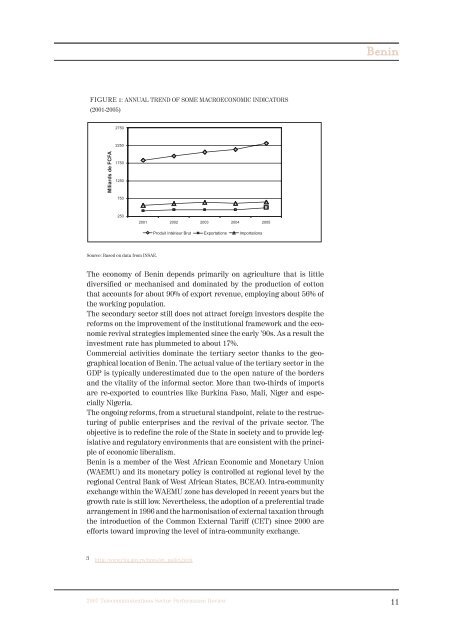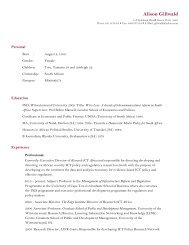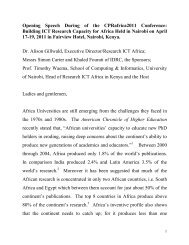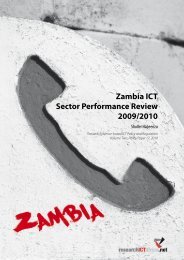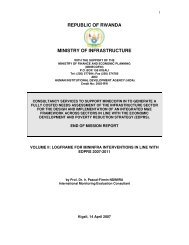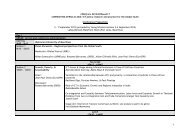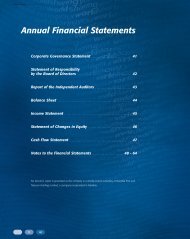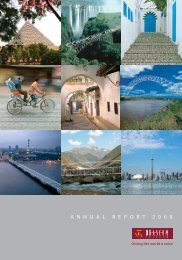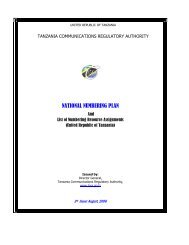Benin Telecommunications Sector Performance Review 2007
Benin Telecommunications Sector Performance Review 2007
Benin Telecommunications Sector Performance Review 2007
Create successful ePaper yourself
Turn your PDF publications into a flip-book with our unique Google optimized e-Paper software.
<strong>Benin</strong><br />
FIGURE 1: ANNUAL TREND OF SOME MACROECONOMIC INDICATORS<br />
(2001-2005)<br />
Source: Based on data from INSAE.<br />
The economy of <strong>Benin</strong> depends primarily on agriculture that is little<br />
diversified or mechanised and dominated by the production of cotton<br />
that accounts for about 90% of export revenue, employing about 56% of<br />
the working population.<br />
The secondary sector still does not attract foreign investors despite the<br />
reforms on the improvement of the institutional framework and the economic<br />
revival strategies implemented since the early ’90s. As a result the<br />
investment rate has plummeted to about 17%.<br />
Commercial activities dominate the tertiary sector thanks to the geographical<br />
location of <strong>Benin</strong>. The actual value of the tertiary sector in the<br />
GDP is typically underestimated due to the open nature of the borders<br />
and the vitality of the informal sector. More than two-thirds of imports<br />
are re-exported to countries like Burkina Faso, Mali, Niger and especially<br />
Nigeria.<br />
The ongoing reforms, from a structural standpoint, relate to the restructuring<br />
of public enterprises and the revival of the private sector. The<br />
objective is to redefine the role of the State in society and to provide legislative<br />
and regulatory environments that are consistent with the principle<br />
of economic liberalism.<br />
<strong>Benin</strong> is a member of the West African Economic and Monetary Union<br />
(WAEMU) and its monetary policy is controlled at regional level by the<br />
regional Central Bank of West African States, BCEAO. Intra-community<br />
exchange within the WAEMU zone has developed in recent years but the<br />
growth rate is still low. Nevertheless, the adoption of a preferential trade<br />
arrangement in 1996 and the harmonisation of external taxation through<br />
the introduction of the Common External Tariff (CET) since 2000 are<br />
efforts toward improving the level of intra-community exchange.<br />
3 http://www.rita.gov.rw/laws/ict_policy.html<br />
<strong>2007</strong> <strong>Telecommunications</strong> <strong>Sector</strong> <strong>Performance</strong> <strong>Review</strong><br />
11


